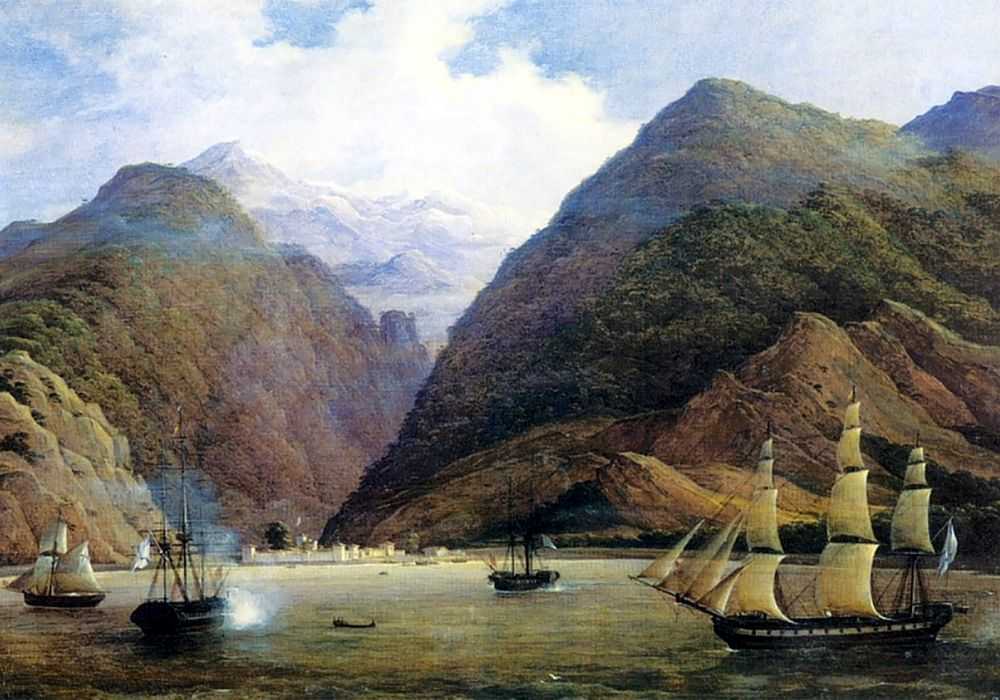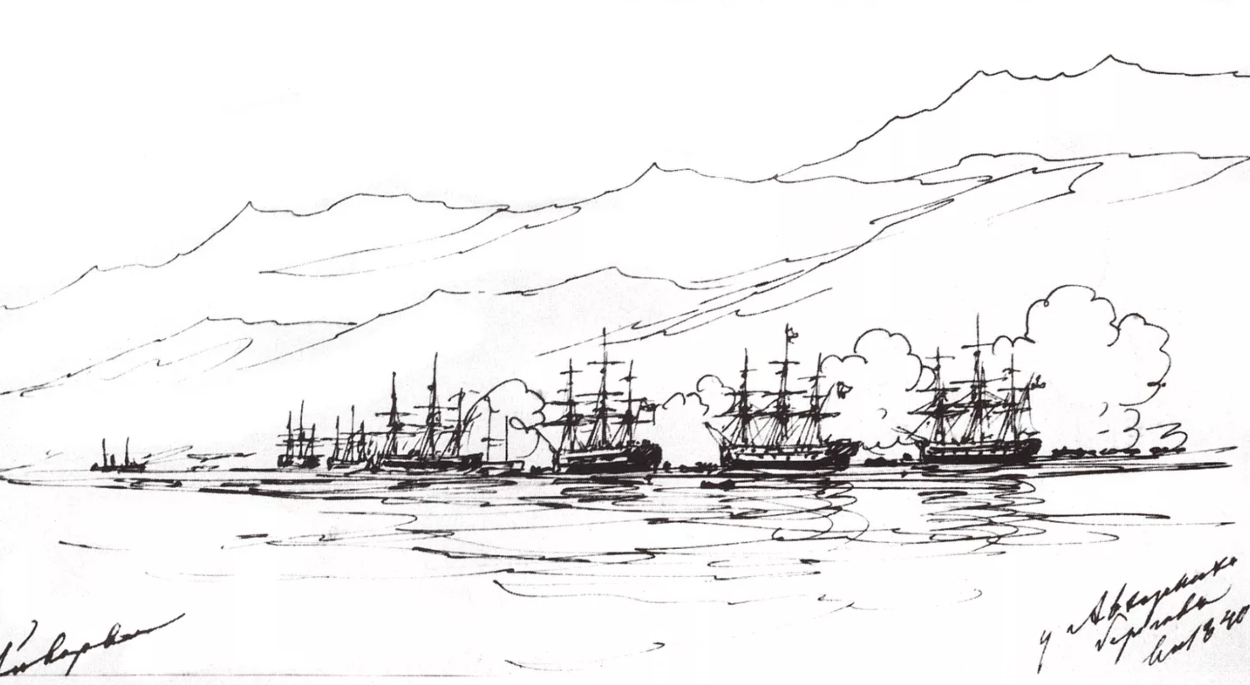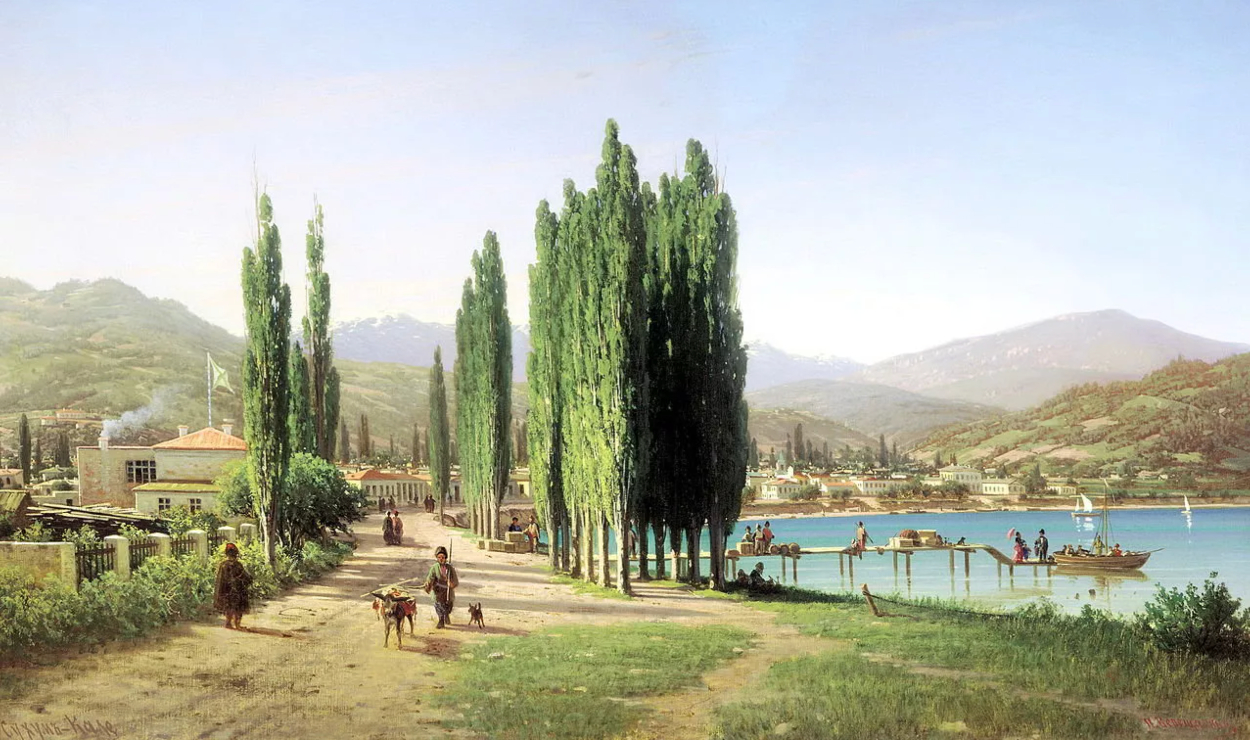Through the Artist’s Eye: Abkhazia in the 19th Century

"Gagra Fortress in Abkhazia," 1837, by Nikanor Chernetsov (1802-1865).
This article delves into how 19th-century Russian artists depicted Abkhazia during their travels to the Caucasus. We explore a collection of these historical artworks, showcasing sites like the Gagra fortress and Sukhum-Kale as they appeared over a century and a half ago.
The Gagra fortress endured multiple reconstructions and demolitions, and was nearly obliterated by the 1940s floods. Today, little remains. Its past grandeur can be glimpsed in Nikanor Chernetsov's 1837 masterpiece, "Gagra Fortress in Abkhazia." A prominent landscape painter of his time, Chernetsov was known for his travels across Russia, Europe, and the Middle East. He was also a friend of Alexander Pushkin, whose study housed Chernetsov’s "Darial Gorge" painted in 1832.

"Gagra Fortress in Abkhazia," 1837, by Nikanor Grigorievich (1802-1865).
Chernetsov also captured the fortress in two additional sketches: one portraying it up close from the shore, and another depicting the ruins of a temple in Gudauta.
The region also attracted artists like Illarion Pryanishnikov, a battle scene artist who focused on the Siege of Sevastopol, and Nikolay Yaroshenko, a portraitist, though they did not portray Abkhazia.

"The ruins of the temple in Gudauta" (1836), by Nikanor Grigorievich (1802-1865).
There's a mythical tale about Ilya Repin's visit to Sukhum, where he supposedly met local Bida Chkhamalia and painted two portraits of him. One portrait was gifted to Chkhamalia and the other, according to legend, was lost in 1942 but is believed to be in a private Finnish collection. This anecdote remains unverified as literature on Repin does not confirm the existence of the "Handsome Abkhaz" painting.
+ Abkhazia and the Abkhazians (1903) | Photos by Joseph de Baye
+ Historical Photos from Abkhazia
Repin’s other works featuring Abkhazia are unknown, and only a mention in his correspondence hints at his affinity for Sukhum: "I liked Sukhum so much that I contemplated buying some land there, but the distance proved prohibitive."

"Sukhum-Kale" by Lev Lagorio (1827-1905).
Vasily Vereshchagin, known for "The Apotheosis of War," shared this sentiment. He purchased a home in Lower Eshera but visited infrequently. The remoteness of Abkhazia hindered his plans for relocation.
Travel to Abkhazia was arduous, involving long journeys and unreliable postal services—challenges incompatible with the lifestyle of a globally renowned artist.

Ivan Aivazovsky, "Russian Squadron off the Coast of Abkhazia," 1840.
Ivan Aivazovsky’s 1840 sketch "Russian Squadron off the Coast of Abkhazia" leaves the exact location ambiguous without the artist’s annotation. It portrays only the mountains descending sharply to the sea with a naval squadron sailing by. While Aivazovsky created numerous marine landscapes of the Caucasus, their specific connections to Abkhazia are unclear.
The late 19th-century Sukhum landscapes by Pyotr Vereshchagin and Lev Lagorio survive, featuring the cypress-lined promenade typical of Sukhum-Kale at the time. It is important to note that Pyotr was not related to the celebrated battle painter Vasily Vereshchagin.

"Sukhum-Kale," 1870s, by Pyotr Vereshchagin (1834-1886).
By the early 20th century, photography had proliferated in Abkhazia, preserving many contemporary views in postcards and photos. Nevertheless, our insight into the 19th-century landscapes of Abkhazia is limited to these scarce but valuable artistic depictions.